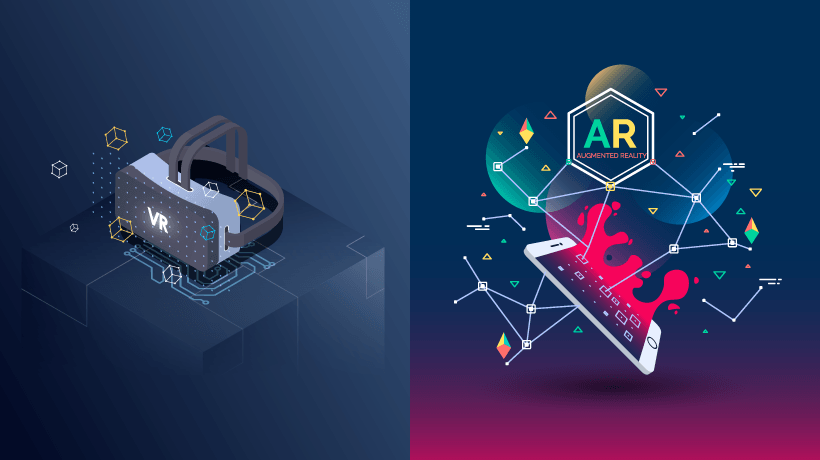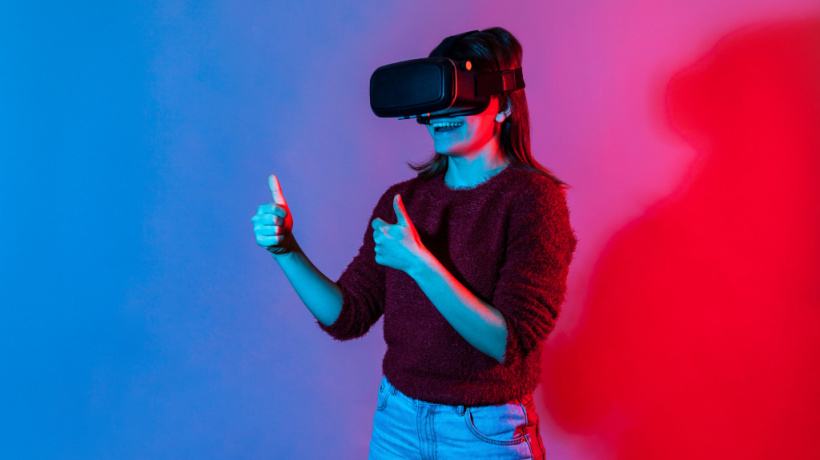How Immersive Tech Can Help Upskill And Reskill
The COVID-19 pandemic has transformed training initiatives from prudent to essential, amplifying the preexisting need for continuous skills development. The emergent need to be upskilled and reskilled is compelling organizations to cultivate a more agile workforce capable of navigating the challenges of an ever-transforming market. Learning and Development (L&D) professionals are positioned as necessary instruments that require detailed reassessment of existing materials and processes to be able to catch up with and stay ahead of the latest updates and technology.
In the current business landscape, talent deficits pose significant challenges, with many business and L&D leaders identifying skills shortages as their foremost concern. With the imperative to upskill and reskill presenting itself at organizations across industries and around the world, one particular method of upskilling and reskilling stands out for its efficacy: immersive learning. Immersive learning refers to a pedagogical approach that fully engages learners in a simulated or interactive environment, often leveraging technologies such as Virtual Reality (VR), Augmented Reality (AR), or Mixed Reality (MR).
This method aims to create a realistic and compelling learning experience, allowing participants to actively participate, explore, and apply knowledge in a context that closely mirrors real-world scenarios. Immersive learning environments can enhance retention, motivation, and the development of practical skills by providing an engaging and interactive learning space.
What Are The Benefits Of Upskilling And Reskilling Programs?
First, upskilling and reskilling open doors to new roles, providing existing employees with opportunities to take on important functions within an organization. This enhances career growth and contributes to a more skilled and flexible workforce.
Upskilling and reskilling initiatives act as a strategic measure to future-proof against disruptions. By evaluating industry skill gaps and proactively addressing them, organizations become more resilient and prepared for the evolving demands of the market.
Moreover, these initiatives foster increased teamwork and morale through cross-functional training and collaborative learning. This strengthens teams and aligns employees with shared goals, promoting a more coordinated work environment.
Additionally, upskilling and reskilling contribute to heightened productivity, confidence, and job satisfaction. Equipping people with the necessary knowledge and skills enhances their ability to contribute to the organization, boosting retention rates and overall engagement. Over time, these initiatives lower hiring costs as the need to hire new employees or fill vacancies diminishes.
What Are The Benefits Of Immersive Learning?
Immersive learning serves as a transformative approach, providing learners with new skills and expanding their knowledge base. One key advantage of immersive learning is its ability to create a distraction-free environment. By immersing learners in Virtual Reality, it blocks out external distractions, enabling learners to focus on the learning task at hand.
This kind of learning also emphasizes the principle of "practice makes perfect." Through repetition and exploration of different outcomes, learners can build muscle memory and perfect techniques. This is particularly crucial for practical training where real-world errors could be costly or dangerous.
Immersive learning is inherently user-centered and personalized, catering to individual needs, pacing, and preferences. The adaptability afforded by immersive learning ensures that each learner's experience is unique, fostering a more effective and tailored educational journey.
Measurability is a key strength of immersive learning, allowing real-time monitoring of learner experiences for immediate feedback. Performance data can also be recorded for analysis, ensuring comprehension and proficiency.
Lastly, immersive learning provides a safe space for experimentation and learning from mistakes. By recreating real-life scenarios in a digital environment, it offers a risk-free platform for learners to explore and enhance specific skills.
Best Practices For Effective Immersive Learning For Upskilling And Reskilling
Strategic Adoption
Immersive learning should align with clear learning objectives and desired outcomes. Avoid adopting technology for its own sake and avoid having it become a liability.
Define Learning Objectives
Establish clear and detailed learning objectives before developing immersive experiences. This ensures alignment with targeted results, facilitating progress assessment and improvement for future projects.
Technology Selection
Choose the right immersive technology based on considerations such as subject matter, shared experiences, physical space, time constraints, and budget. Ensure age-appropriateness for user comfort and safety.
Clear Onboarding And Safe Environment
Prioritize user comfort and understanding by providing clear instructions on hardware operation, setting expectations within the immersive experience, and offering simple exit procedures. Consider employing friendly avatar guides for enhanced guidance.
Structured Planning
Plan immersive learning experiences with a focus on user control, preempting different scenarios, and storyboarding actions. Opt for bite-sized experiences, limited to around 20 minutes, to maintain learner engagement.
User-Centric Focus
Tailor immersive learning experiences to be user-focused, considering learners' technological proficiency and tolerance for duration. Ensuring content resonates with users enhances overall effectiveness.
Include Interactivity
Utilize various learning modalities, including lectures, podcasts, videos, and interactive activities, to reinforce key concepts. Incorporate simulations and real-world scenarios to actively engage learners and provide rapid feedback.
Make It Realistic
Create immersive learning experiences using natural settings, true-to-life situations, simulations, and environments. This approach helps learners acquire practical skills applicable to real-world settings.
Accessibility
Ensure immersive learning experiences are accessible to all learners, including those with disabilities. Make the platform compatible with assistive technology and offer different formats for students with visual or aural impairments to promote inclusivity.
Include Social Learning Aspects
Foster student cooperation and knowledge sharing by incorporating social learning opportunities. Forums, collaborative projects, and peer review exercises enhance the immersive learning experience, fostering a sense of community and shared learning.
Putting It All Together
In conclusion, the current business landscape demands a shift in how organizations approach Learning and Development. As organizations navigate the complexities of talent shortages and technological advancements, investing in the upskilling and reskilling of existing employees emerges as a strategic solution.
The urgency to bridge skills gaps presents both a challenge and an opportunity for L&D professionals. To thrive in today’s ever-changing business world, organizations must reassess strategies and adapt methodologies to effectively upskill and reskill employees in future-ready skills.
Embracing immersive learning positions companies to more effectively, efficiently, and quickly upskill and reskill their workforce. By adhering to best practices, L&D practitioners can maximize the effectiveness of immersive learning experiences. These practices ensure alignment with learning goals, enhance engagement, and create an inclusive and impactful learning environment.
In essence, the convergence of upskilling, reskilling, and immersive learning forms a comprehensive approach to addressing the evolving needs of industries and the workforce. By utilizing these strategies and practices, organizations not only future-proof against disruptions but also cultivate a workforce that is adaptable, skilled, and ready to excel in the dynamic and technology-driven markets of the future.









